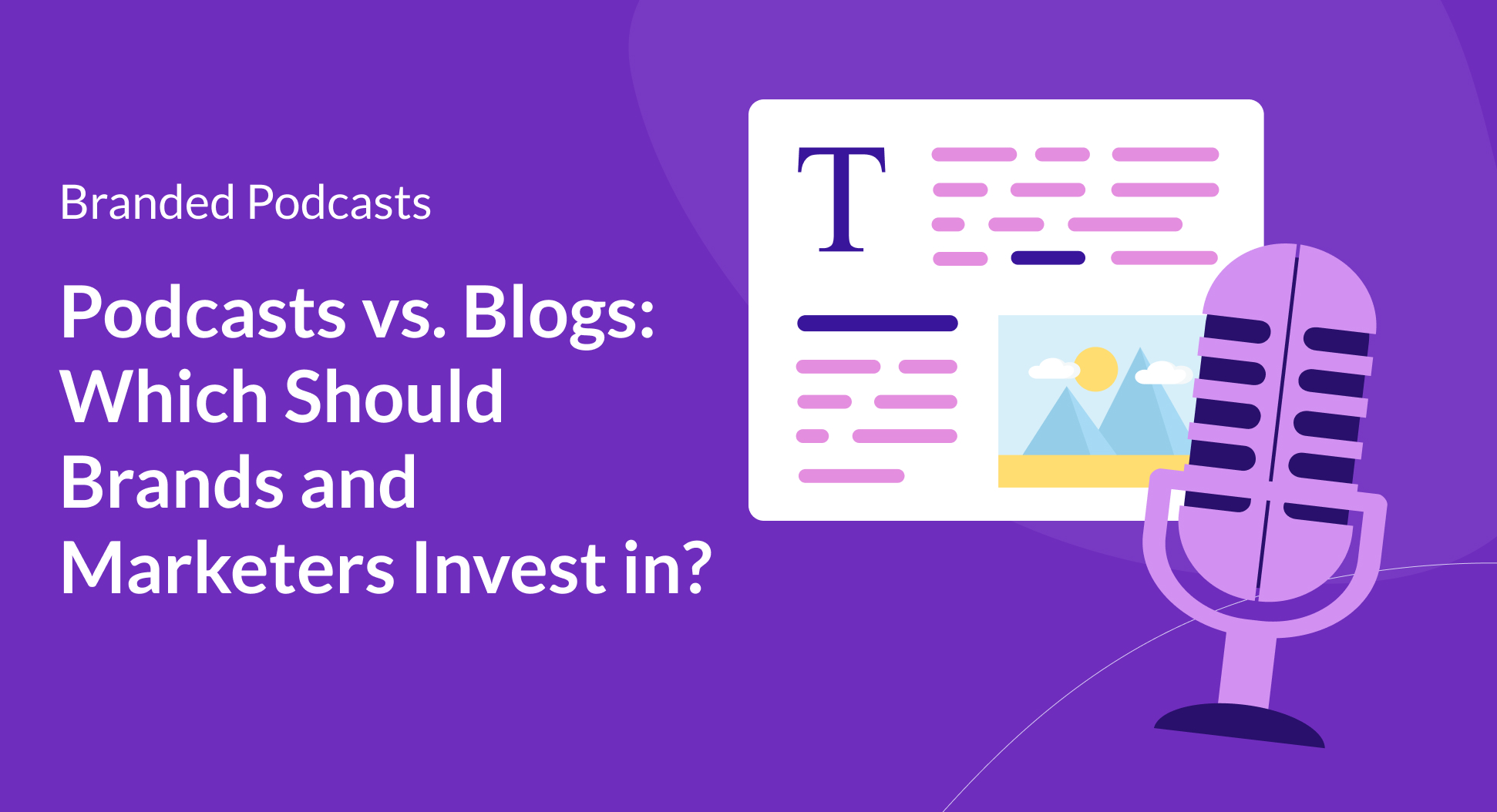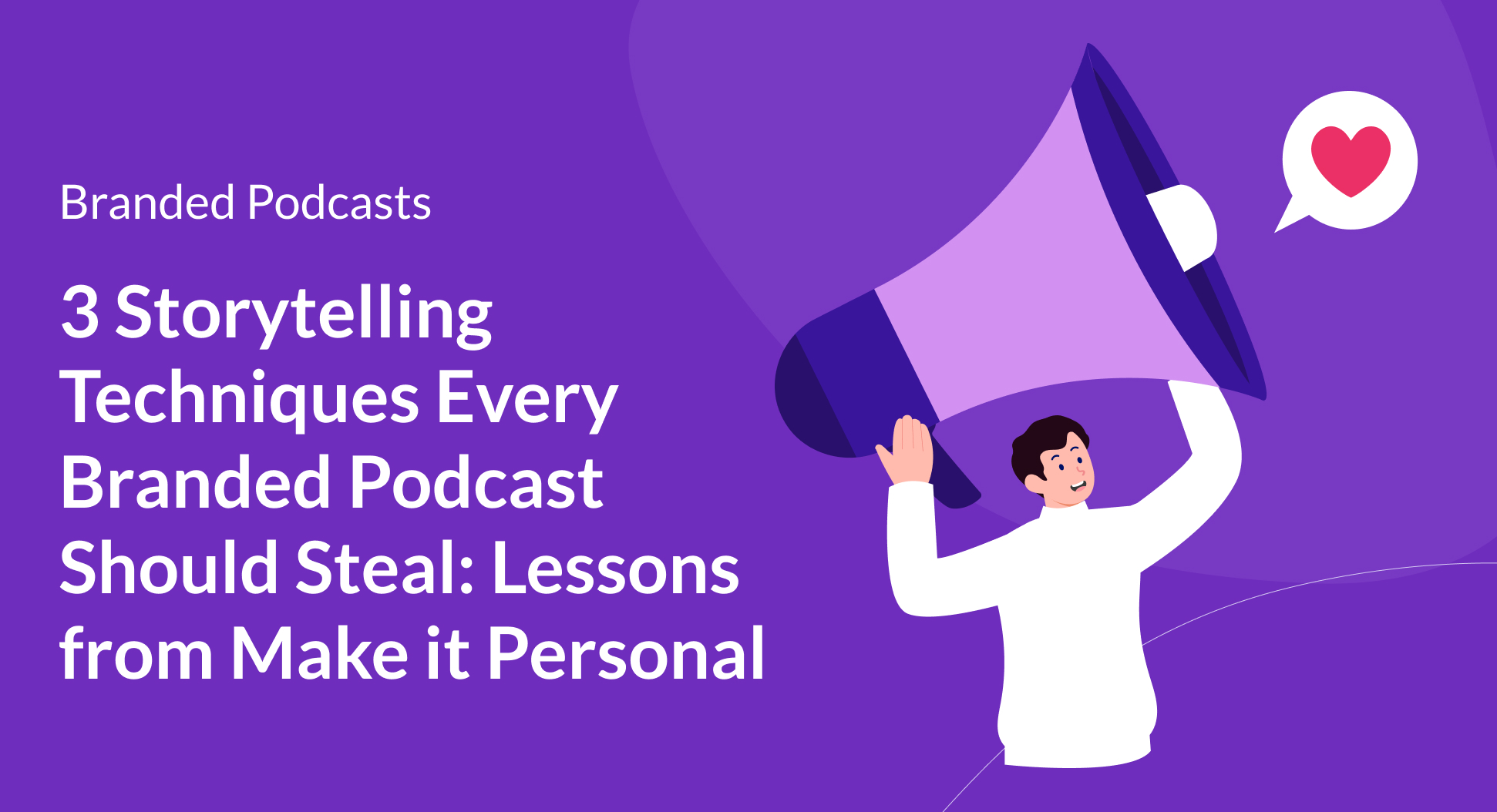Contents
In the world of branded podcasts, the concept of memorability often comes up. How can you make listeners remember your brand?
Initially, you may think that stuffing your podcast with ads or mentioning your brand name every few sentences will do the trick. However, we’re here to tell you that this kind of strategy will ultimately be detrimental to your podcast’s success.
There are many strategic tactics you can take to ensure that your brand is memorable for your podcast listener. Below we break down just a few:
Authenticity is key
First things first, authenticity is going to be a key driver of your podcast. A goal for many podcasters is to build a connection with their listeners and for a brand, it can be even more of a challenge to break out of the corporate facade that many people might already associate your brand with.
Because of this, we can’t stress enough how important it is to keep authenticity top of mind during the production and promotion of your podcast.
A couple ways to do this include:
Don’t script your podcast word-for-word
Unless you’re producing a fictional series that follows more of a storyline or narrative, please don’t script your entire episode. Scripting a podcast that’s supposed to be more of a discussion can come off as robotic and uptight, something that you’ll want to avoid as a brand in audio. Sometimes the best podcast episodes happen when you sit down in front of a mic with a rough structure in mind and let curiosity and creativity lead the conversation.
Let your personality shine through
Not only do you want to showcase the personality of your company but you also want to give your host freedom to add their own personality to the content. Listeners (typically) will be hearing from your host every single episode, if they can’t connect or relate to them in any way then it’ll be hard to convince them to come back. Personality and even vulnerability will be your company’s best friend in audio.
Back yourself up with factual data
Nothing can ruin a reputation like sharing false or incorrect information. Ensure that whatever data you’re sharing throughout your episode is factual and can be backed up.
As a brand, you want listeners to know that the data is coming from an authentic place and that you’re a trustworthy source in the industry. Also be sure to share the links to studies or other data sources that you’re grabbing intel from in your show notes so listeners can always refer back to them.
Showcase your values and mission
Typically with brands, the values and mission relate to the values of their target audience or even touch upon a pain point that they’re typically experiencing. Don’t be afraid to share your brand’s values and mission with listeners (obviously, in a non-promotional way) throughout your podcast.
Talking about your company’s values can be a great way to talk a bit more about your brand and what you stand for in a way that’s not so “in-your-face” (or “in-your-ear”) advertising. The first lesson of brand storytelling 101 is to focus on crafting a captivating and value-driven story that leaves room for listeners to relate or connect to your brand.
When it feels natural and it’s adding something to the conversation, feel free to test out mentioning your brand’s values and explain how they relate to what’s being discussed. The host can even do this personally, sharing their own values and if they tie back to the company’s values, then that’s even better!
If a listener can relate to your company on a deeper level, it increases the odds of them not only coming back for more episodes but also keeping your brand top of mind outside of the podcast world.
Connect with audiences outside of the podcast
Communicating with audiences doesn’t just have to happen on the podcast.
Your brand most likely has other marketing channels that you’re active on such as social media or newsletters. Your podcast doesn’t have to be a siloed marketing channel—try integrating it with your other tactics.
As you grow your podcast audience, encourage listeners to follow you on social media to further the conversation or maybe to sign up for your newsletter to receive even more resources and insights. Maybe you could offer listeners a discount to a webinar or event you’re hosting with a custom link or promo code. In this case, you can also track conversions from your podcast.
When audiences join your other marketing channels, you’re not only able to communicate with them in another format and environment but also continue to provide them with value. And there’s also nothing wrong with having your brand pop up in front of your audience across various channels.
Other places to engage your podcast audience:
- Social media
- Newsletters
- Blogs & whitepapers
- Webinars
- In-person events
- Discounts on services
Be consistent with messaging and branding
We mentioned messaging in the point above about sharing your brand values, but you’ll want to ensure that any messaging or brand materials you’re sharing with your audience are consistent. Now there are some branded podcasts that choose to have different branding and messaging than the actual brand behind the show. There’s absolutely nothing wrong if you decide to have another degree of separation between you and your podcast to truly showcase that it’s almost a brand in and of itself with its own message and mission.
But with that being said, it’s crucial to make sure that you’re consistent with the messaging in every episode and if you choose to direct listeners to other channels, use consistent branding when you’re sharing the podcast. For example, this might be through the graphics or images on social media, your website, in newsletters, etc.
If you decide to have the same branding for the podcast as your company, then similar to what we’ve already said, keep it consistent between your brand and the audio content you’re sharing.
It can be confusing to listeners and easier to forget you if you have no consistent message or brand for them to follow.
Don’t be afraid to get a little creative
Resist the temptation to follow suit with what’s already been done in audio. Don’t be afraid to get a little creative and try something new in your industry or in the world of branded podcasts. Podcasting is by no means a crowded medium (yet) but with that being said, there are still a lot of shows out there. And because of this, break the status quo a bit and try to do something that surprises, engages, and captivates the listener.
Maybe you test out a different format, sound design, guest format, or marketing strategy. This is an easy way to stand out to listeners as something that’s different compared to what they’re used to hearing.
For example, for our clients at Quill, we typically create a competitive matrix and the goal of this exercise is to better understand what kind of content other podcasters in our clients’ genre and topic focus are producing. We analyze elements like format, quality, hosts, length, etc.
We then try to find areas where we can differentiate the podcast and stand out. Maybe we noticed that a lot of the podcasts in the FinTech space are an interview-style format. Because of this, we may test out a journalistic or narrative format to set ourselves apart.
Be subtle with brand promotion
And last but not least, be subtle with brand promotion.
We always say that no one wants to listen to a 30-minute infomercial. A podcast isn’t meant to be a communication channel for you to spread the news as to why your company is the best, the features you offer, what you can do for clients or customers, etc. That can make for pretty dry content to tune into.
We want to make sure that your brand is memorable to audiences, but if you lean into this too hard and end up annoying that listener, you can be pretty certain they’re never coming back. Most branded podcasts will rarely share ads for the company throughout the audio since it seems redundant but if you wish to share ads, do so either at the end of the podcast episode or closer to the middle. This means a listener won’t be immediately bombarded by ads about your brand before they get some value from the content.
The tips we’ve shared above will help you to be memorable to listeners so grand brand promotion isn’t needed. Rather, focus on sharing resources and tools that actually provide your listener with value and insights. This will make you more memorable to them than a 30 second ad ever will.






.png)

.png)




.png)
.png)
.png)
.png)